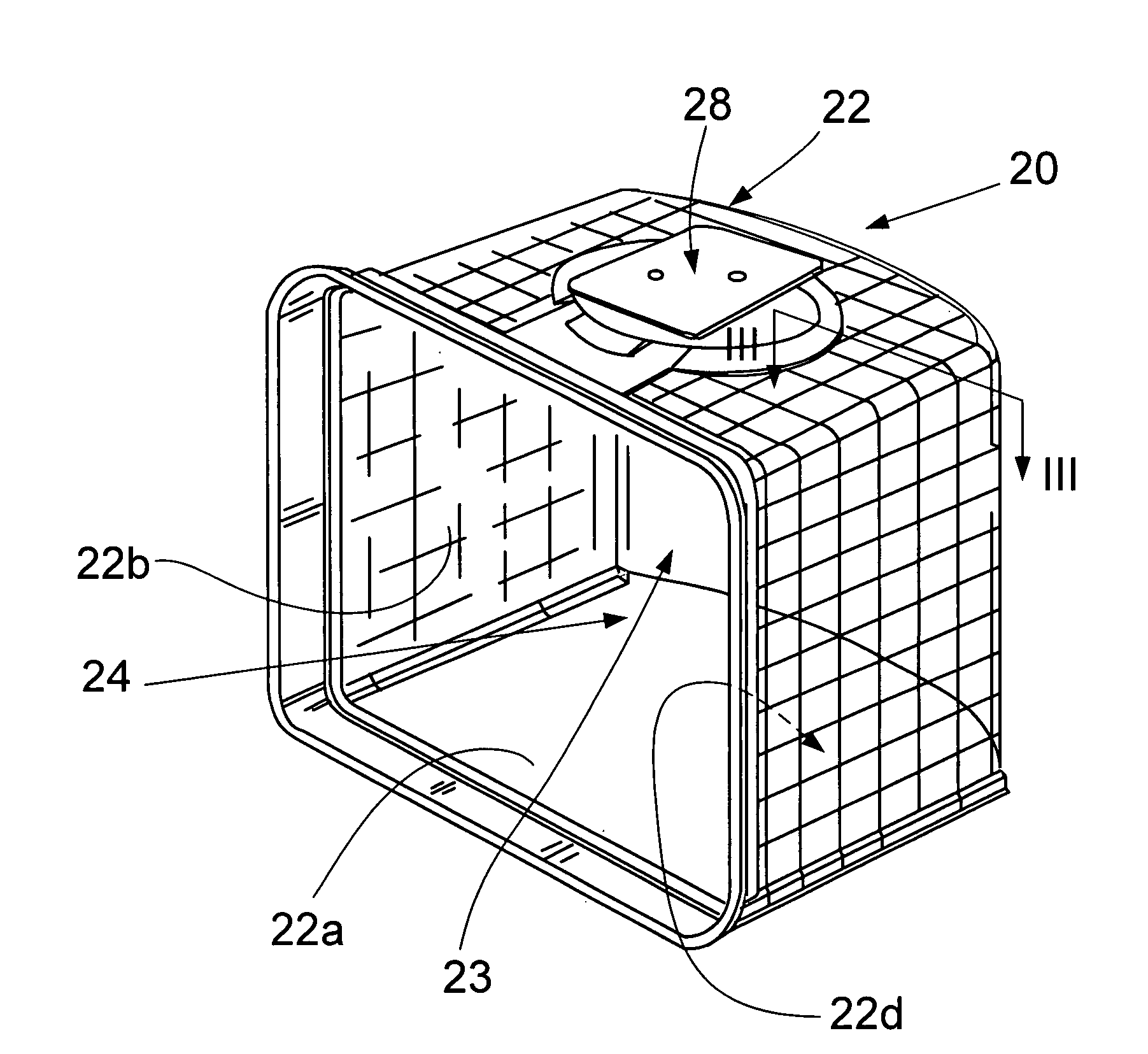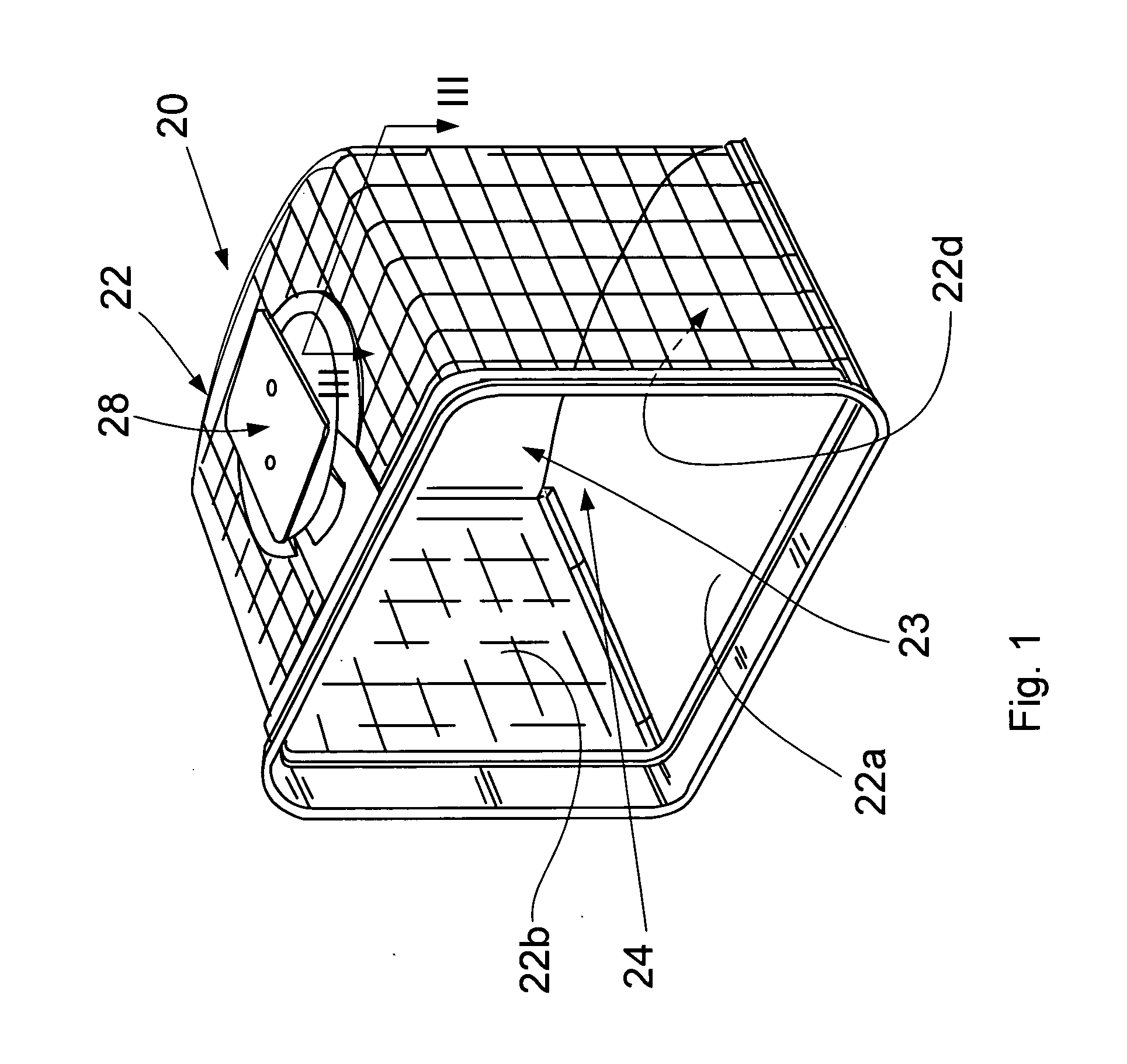Apparatus and method for application of a thin barrier layer onto inner surfaces of wafer containers
- Summary
- Abstract
- Description
- Claims
- Application Information
AI Technical Summary
Benefits of technology
Problems solved by technology
Method used
Image
Examples
Embodiment Construction
[0041]To better understand the principle of the present invention, it is advantageous first to describe the wafer containers that constitute an object of treatment with the apparatus of the invention.
[0042]Although the wafer container of the present invention may be of any suitable type, hereinafter it will be exemplified by a wafer container known as a FOUP, which typically has the shape of a box having one side open for loading and unloading wafers, manually or with the use of a mechanical arm of an industrial robot.
[0043]FIG. 1 is a three-dimensional view of a FOUP 20 suitable for the purposes of the present invention. The wafer containers of the type described below are beyond the scope of the present invention and constitute a subject of co-pending patent application Ser. No. ______ of the same application filed on ______
[0044]FOUP 20 is made in the form of a box 22 with an open front side 24 and with the cover removed. The cover 26 is shown in FIG. 2, which is a three-dimensio...
PUM
| Property | Measurement | Unit |
|---|---|---|
| Thickness | aaaaa | aaaaa |
| Electrical conductivity | aaaaa | aaaaa |
| Electrical resistance | aaaaa | aaaaa |
Abstract
Description
Claims
Application Information
 Login to View More
Login to View More - R&D
- Intellectual Property
- Life Sciences
- Materials
- Tech Scout
- Unparalleled Data Quality
- Higher Quality Content
- 60% Fewer Hallucinations
Browse by: Latest US Patents, China's latest patents, Technical Efficacy Thesaurus, Application Domain, Technology Topic, Popular Technical Reports.
© 2025 PatSnap. All rights reserved.Legal|Privacy policy|Modern Slavery Act Transparency Statement|Sitemap|About US| Contact US: help@patsnap.com



